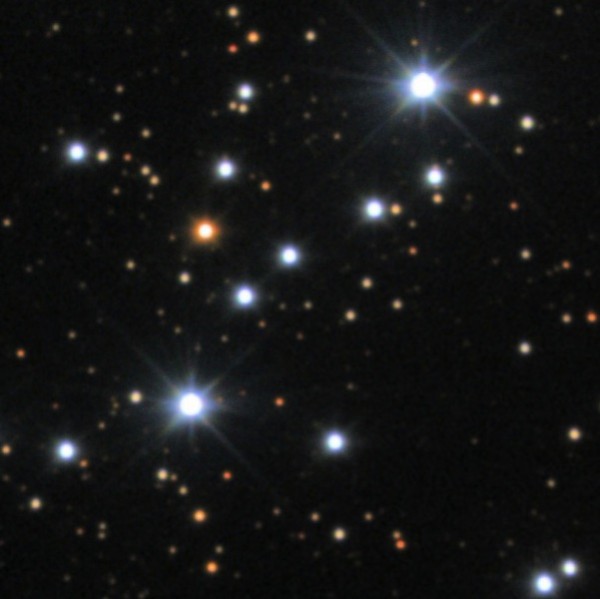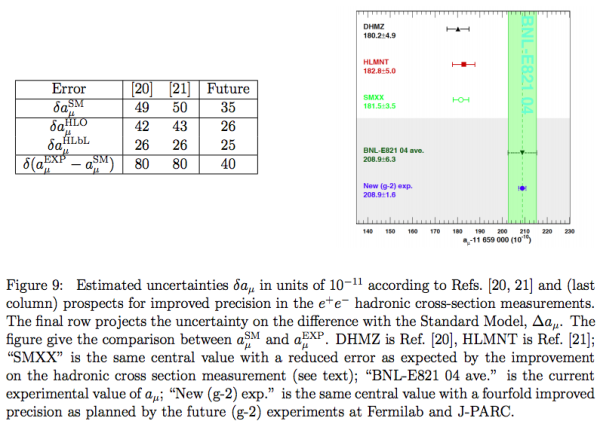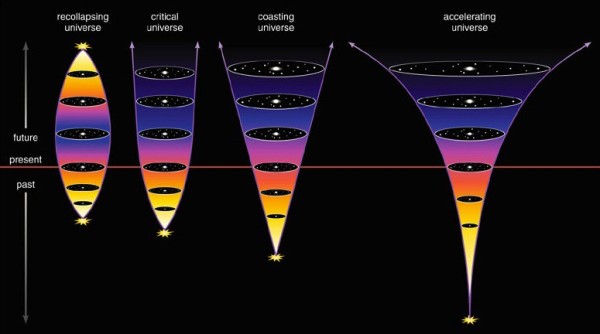"Education is simply the soul of a society as it passes from one generation to another." -G.K. Chesterton
It's been a very busy week here at Starts With A Bang! You may have noticed that our blog's main page has a new layout, some of you who follow me on social media may have noticed that I took the ice bucket challenge (and my bald head proved hydrodynamic), and we had a remarkable week of outstanding posts, including:
- Why didn't the Universe become a black hole? (for Ask Ethan),
- The dumbest sign in history (for our Weekend Diversion),
- The butterfly cluster, M6 (for Messier Monday),
- Five reasons we think dark matter exists (a great post by our writer Amanda Yoho),
- The physics of a new generation, and
- Discovering the Earth from space (for Throwback Thursday).
Each week, we run a synopsis of each major article here, and you can have your say commenting, asking questions and responding to one another. And after all is said and done, I'll call out my (typically five) favorites, and respond to them as best I can in our Comments of the Week. Without further ado, here they are!
Image credit: Dwight Vincent of U. Winnipeg, via http://ion.uwinnipeg.ca/~vincent/4500.6-001/Cosmology/Black_Holes.htm.
From Robert on the Universe/black hole question: "If I remember my cosmology lectures correctly (and this was a dozen years ago, so I probably don’t!) I think I heard that if you were to calculate the Schwarzschild radius of all the mass in the visible universe, it would be the size of the visible universe. At the time I thought this was quite remarkable. Is this an equivalent way of stating that we’re nearly in the Goldilocks zone of a flat universe? If so, could you interpret this as saying that in fact, we are living inside a black hole? We certainly cannot escape this universe!"
Here's what the important difference is between our Universe and a (Schwarzschild) black hole, that I attempted to state clearly but perhaps got lost in the shuffle: our Universe is a dynamic spacetime, where the metric structure of coordinates is dependent on a scale factor that changes over time, while a Schwarzschild black hole is a static spacetime, where the coordinate structure remains the same at all times infinitely into the future.
That said, there are certainly important similarities between these two solutions in Einstein's General Relativity. If you total up all the matter-and-energy in the forms of particles and radiation, you'd arrive at a certain value. If you asked yourself, "what kind of a Schwarzschild radius does that correspond to," the answer you'd get is really interesting: something almost (about 1/3) the size of the visible Universe!
If the Universe were what we call an Einstein-de Sitter Universe, corresponding to the "critical" case above, then the radius of our Universe's "black hole" would correspond exactly to the value our scale factor asymptotes to! But seeing as how our Universe contains dark energy, we don't have quite enough matter-and-radiation to reach even our present value of size-and-scale in the Universe today.
It might seem like a remarkable coincidence, but you must remember that the bigger a black hole is, the less noticeably it's curved near the event horizon: a counterintuitive notion! If the Earth turned into a black hole and you stood at its event horizon, the tidal forces on you would be more than 10,000,000,000,000,000,000 times greater than the accelerating force due to gravity on Earth's surface today, but at the event horizon of our galaxy's supermassive black hole, they'd be only 0.01% as great. In summary, it's fun to think about, but I think it really speaks to how wrong our common intuitions are when it comes to very massive black holes.
Image credit: © Stéphane Guisard, Los Cielos de Chile, via http://sguisard.astrosurf.com/Pagim/M6-TOA-STL-RVB.html#Top.
From Mike Maxwell on our Messier Monday: "You write, “for every bright, easily-identifiable “blue” star in this cluster … there are many others that are white, yellow or red, and much dimmer!” Given that there are many background stars in that region of the sky, how can we tell which of the non-blue stars in the line of sight of this cluster actually belong to the cluster? They’re too far away to show any proper motion, right?"
When you say "proper motion," you likely mean the side-to-side motion that we would only observe over periods of many hundreds of years at this distance scale. But there are plenty of other techniques you can use to determine the position of distant stars, such as simple photometry, which determines a star's luminosity in various wavelength bands. When you combine a star's temperature with its other properties that you can obtain spectroscopically (e.g., seeing if it's main sequence or not, seeing if its line-of-sight motion matches the other stars in the cluster, etc.), you can reliably determine its distance. If we can get these sorts of images from the ground from an amateur telescope (corresponding to the "V" just to the above left of center in the image above), below, imagine what something like Hubble could do.
 Image credit: Jim Misti of Misti Mountain Observatory, http://www.mistisoftware.com/astronomy/Clusters_m6.htm.
Image credit: Jim Misti of Misti Mountain Observatory, http://www.mistisoftware.com/astronomy/Clusters_m6.htm.
Now, we haven't done that for this cluster, but we have for many others. What we find is exactly what I've told you: for every blue star (O, B, or A-class) we find, we find many others that are redder in color (F, G, K or, most frequently, M-class). In fact, in our local Universe, three-out-of-four stars are M-class red dwarfs, something that it's very likely Jim Misti's impressive photo isn't sensitive enough to uncover.
On a related note, Messier Monday is on track to end in just three short months! I've been working hard to think of a great replacement, and the leading idea is to replace it with a Movie Monday where we explain pretty much any physical phenomenon that people would find interesting. Leave your comments here, at the end of this post, if you have a picture, video, or concept that you think would be a great idea for a short, fun-but-educational explainer movie. I'm working on a few ideas I think are good, too, and next week I'll come back with a poll for you to vote on your favorites!
 Image credit: flickr user Lush, via https://www.flickr.com/photos/lush/52805877/.
Image credit: flickr user Lush, via https://www.flickr.com/photos/lush/52805877/.
From MandoZink on the dumbest sign in history: "I have always been amused that our county works department will put up a sign saying: - DIP IN ROAD - before a spot in in the road where the subgrade has sunk a bit. Instead of repairing the road, they often put a sign which remains there for years. We DO have a large works department with a healthy budget. I can only assume that they have a large supply of signs and think they’re putting them to good use."
You want to play this game? Fine, let's play. Here in Portland -- actually, right in my neighborhood here in Portland -- we have a bunch of old... let's call them "paths" where we don't have streets at all. Sure, you can risk driving your car through them, but you probably shouldn't if, you know, you value your car.
Are there plans to fix these giant holes? To pave the roads? To add sidewalks?
No. Here's what we do in Portland when this is what your street looks like.
 Image credit: flickr user Shawn Granton, via https://www.flickr.com/photos/urbanadventureleaguepdx/8396664102/.
Image credit: flickr user Shawn Granton, via https://www.flickr.com/photos/urbanadventureleaguepdx/8396664102/.
"Roadway not improved." Well, duh.
Image credit: Paul Tankersley’s astrophotography, of the Coma Cluster of galaxies 321 million light-years away, via http://ptank.blogspot.com/2010/05/abell-1656.html.
From Sean T on the topic of dark matter: "I don’t know how seriously to take this, but I have read that there are speculations out there that gravity is such a weak force because there are more than 3 spatial dimensions and that the gravitational force somehow “leaks” into other dimensions whereas the other fundamental forces do not. If such a thing is reasonable, would it be possible that matter that exists in such additional dimensions could be the explanation of dark matter? After all, under this idea, gravity is the only force that interacts with the additional dimensions beyond the three familiar ones. This would account for the main property we know about dark matter, namely that it seems to only interact gravitationally with normal matter."
The idea is indeed a speculative one, but not necessarily a crazy one. When we talk about modifying gravity, adding an extra dimension (or multiple extra dimensions) is an interesting possibility. But there are a lot of parts to this that vary in how crazy they are. If there are extra dimensions (which is possible), then they must be very small in scale.
Now, how would gravity change? In our three dimensional world, gravity is a 1/r^2 force at large distances. But if there were, let's say, N spatial dimensions at very small scales, then gravity behaves as a 1/r^(N-1) force at those small distances. So every time we test the force of gravity down to greater-and-greater precision on small scales (and we're down to micron-sized tests now), we constrain the maximum size/scale of these extra dimensions. The last part of your statement, however, is more difficult to wrap our heads around. Because it's not easy to imagine how you could have something massive that exists in these other dimensions that doesn't also live in our three dimensions.
 Image credit: Kapitulnik Geballe Beasley group at Stanford, via http://web.stanford.edu/group/kgb/old_website/Research/gravity.html.
Image credit: Kapitulnik Geballe Beasley group at Stanford, via http://web.stanford.edu/group/kgb/old_website/Research/gravity.html.
The only way to work around that possibility (that we've thought of) is to have a literally parallel Universe -- not an identical one but a Universe that had three spatial dimensions that lived alongside our own, separated by a new-and-distinct dimension -- where other matter lived and gravitationally influenced our own. It's possible in the sense that we can't rule it out, but it isn't yet either a compelling or workable theory that explains our Universe in detail. Such is often what the frontiers of theoretical sciences look like.
And finally...
Image credit: T. Blum et al. (2013), via http://arxiv.org/abs/1311.2198.
From the quite brilliant Michael Kelsey on the next generation of physics: "@Marshall Eubanks #7: I think you might have missed something, which was *not* clearly spelled out in Ethan’s article. The “4.7 sigma” discrepancy is NOT the difference between the experimental result and the SM central value.
It is the uncertainly on the _difference_ between those values, compared to a difference of zero, where that uncertainty is the sum in quadrature (including correlations) between the SM calculation and the experimental result.
Just comparing the experimental result to the SM central value, the discrepancy would be more than 6.6-sigma, but that is not a valid comparison, as you note.
The SM calculation is extremely well controlled, for all of the QED terms. The largest uncertainly comes from the higher order diagrams involving hadrons (quark loops, or pion and rho resonances in low energy EFT). Substantial progress on reducing that contribution is coming from studies of pion and kaon radiative decays."
Of all the commenters we get on Starts With A Bang, Michael Kelsey is maybe the one who impresses me the most. As an experimental particle physicist, he knows his stuff very well, and also is curious about the things he doesn't know and recognizes what the limits are of his own knowledge. He doesn't condescend to others and he doesn't let comments that disparage him personally (always for unfounded reasons) get him down. So when he makes comments like the one above, I'm incredibly thankful, because he's doing some of the heavy lifting for me.
There are uncertainties on the theoretical calculations of the muon's g-factor, having mostly to do with the uncalculated terms and their contributions. There could be additional uncertainties if some of the calculations are wrong, but there are multiple people checking these calculations independently. But the theoretical errors -- assuming they've done their job correctly -- are smaller than the experimental errors, and that's why looking to this new generation experiment is so interesting.
 Image credit: T. Blum et al. (2013), via http://arxiv.org/abs/1311.2198.
Image credit: T. Blum et al. (2013), via http://arxiv.org/abs/1311.2198.
Right now, we can state there is a discrepancy between theoretical and experimental values, that each of those values have errors, and we have a ~4-sigma confidence that these two values are legitimately different from one another. But with the new experiment, we expect that confidence to rise to ~7-to-8-sigma, which should be more than enough to announce as a "discovery." Unlike neutrino oscillations, which don't necessarily point to new particles (there could just be a small Yukawa coupling), this would necessitate a new contribution, which would mean new particles and interactions.
It's an exciting time for physics!
So thanks for a great week of comments, and leave your Movie Monday ideas (and hopes) here!


